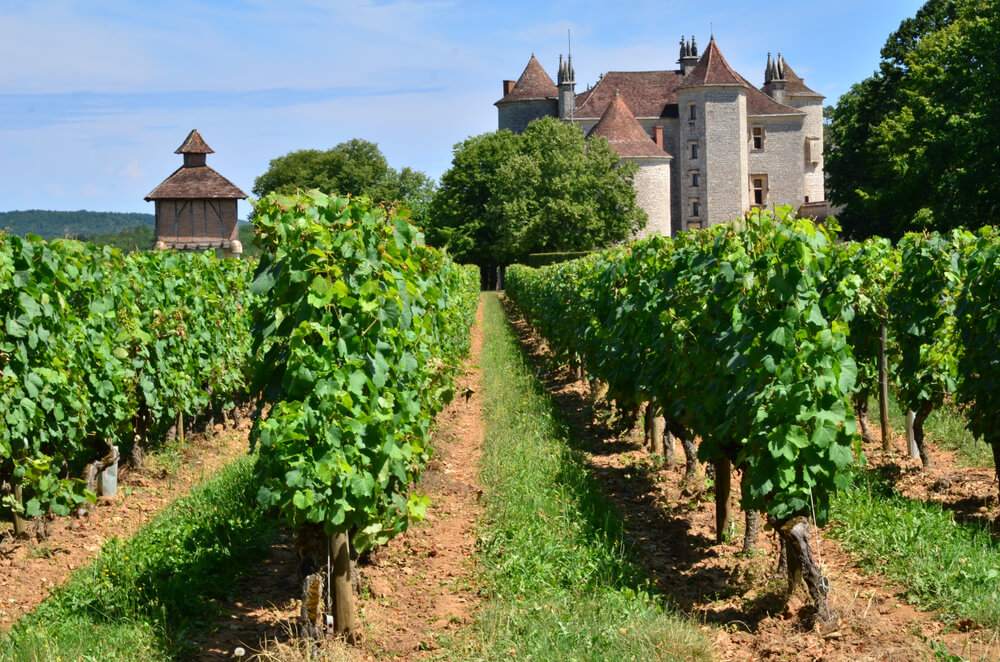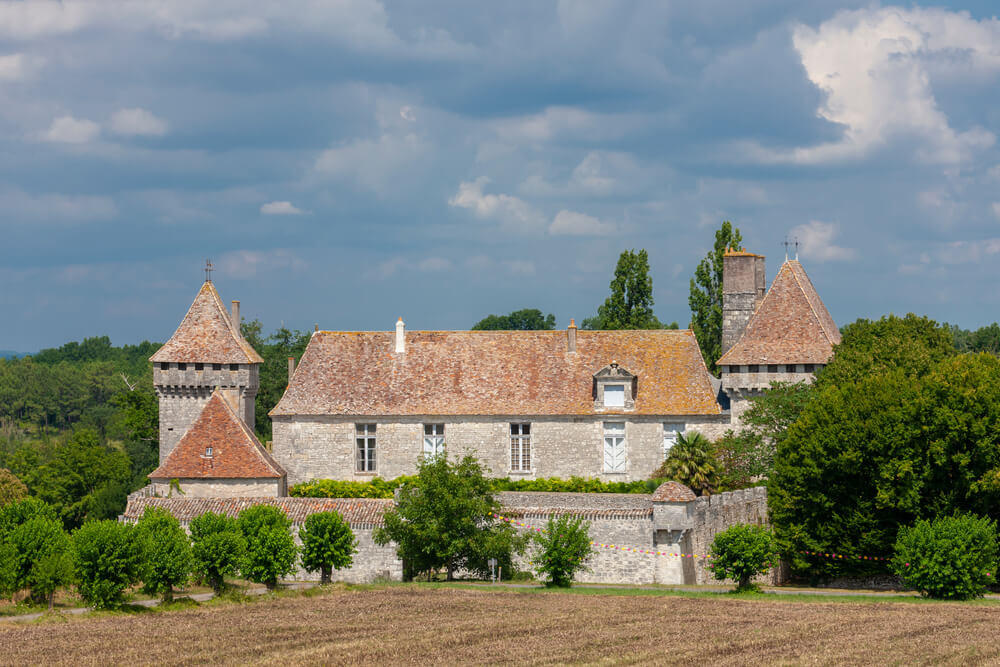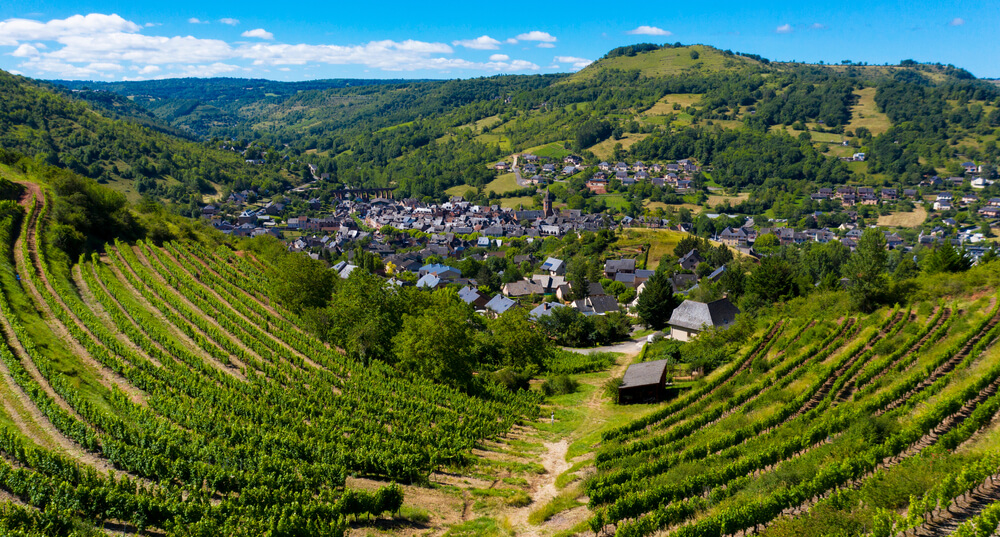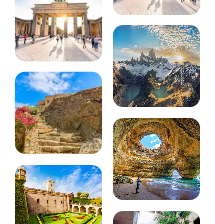Discover and visit the vineyards of the South-West

The wines of the South-West are renowned for their character. Like Cyrano de Bergerac, who at the end of the dispatch touches down, these wines will surprise you with an incredible range of grape varieties spread from the foothills of the Pyrenees through the Garonne to the foothills of the Massif Central. Red and white varieties, dry or sweet, sparkling wines, light or ageing wines from authentic terroirs with inimitable character.
That’s what you’ll find in the South-West. From family vineyards of just a few hectares to huge, renowned estates, there’s something to suit all tastes and budgets. Passionate winegrowers will tell you all about their vineyards, and let you taste their vintages in their vineyards or their superb châteaux, which offer a particularly charming and peaceful setting.
A history that has often lasted for generations, a conviviality that is so dear to this region, proud of its roots and its history, vineyards that go wonderfully well with local, traditional gastronomy. This is what you’ll discover when you visit the vineyards of the South-West.
What are the main appellations to be discovered in the wines of the South-West?
The wines of the South-West have 4 distinct appellations:
1 – In the middle Garonne…
Comprising the departments of Tarn-et-Garonne, Haute-Garonne, Gers and Lot-et-Garonne, the vineyards are located on the terraces on the left bank of the Tarn and Garonne rivers. The appellations of the wines of the piedmont of the middle Garonne are :
- Buzet,
- Fronton
- Brulhois,
- Côtes-du-Marmandais,
- Saint-Sardos.
Producing both wine grapes and table grapes, it is in this part of the South-West vineyards that you will find the famous table grape Chasselas de Moissac, which is particularly tasty, fleshy and sweet. The wine is mainly red and is made by blending a wide variety of grape varieties: négrette from Fronton, syrah, cinsault, gamay, carbernet, cot, buzet…
Abouriou is a particularity of the Marmandais region that you will only find here. Fruity table wines that go well with a wide range of dishes and offer excellent value for money.
2 – In Bergerac and Duras
The vineyards are located in the Dordogne department and are irrigated by the river of the same name. Renowned for its rich prehistoric heritage, medieval villages and fortified castles, this department is also renowned for its gastronomy, with truffles, ceps, foie gras and, of course, wine.
From the confluence of the Vézère to the Gironde, there’s an anthology of vineyards with Bordeaux-style grape varieties: Sauvignon, Semillon and Muscadelle in the whites, Cabernet Sauvignon, Cabernet Franc and Merlot in the reds. The reds are full-flavoured or have strong tannins, and the whites are dry, sweet or syrupy. The largest appellations, Bergerac and Côtes-de-Bergac, cover 90 communes or 12,000 hectares. You’ll also find Monbazillac, Montravel, Pécharmant, Rosette and Saussignac.
3 – In the foothills of the Massif Central
Straddling the Lot and Tarn valleys, this is where you’ll find the Gaillac and Cahors appellations, as well as the Aveyron vineyards around : Marcillac, Estaing, Entraygues and Fel. Close to the pilgrimage route leading to Santiago de Compostela, these vineyards were created by the surrounding monasteries, in particular the Abbey of Conques, which is at the origin of the Marcillac vineyards.
This area is reminiscent of the Middle Ages, when the inhabitants of enclosed villages and monasteries cultivated their own vineyards. The climate is alternately harsh and southern, the soils clay-gravel or limestone, and the grape varieties are complex, giving these highly distinctive wines their tannic character and very different profiles (spicy, fruity, flowery, etc.). The appellations for wines from the foothills of the Massif Central are :
- Cahors
- Coteaux-du-Quercy,
- Entrayges-le-Fel,
- Gaillac,
- Marcillac,
- Vins-d’Estaing.
4 – In the Pyrenean foothills
With the Pyrenees mountain range as a backdrop, and benefiting from the proximity of the River Adour and warm, sunny periods, this is a land of character where the wine is dense with a clean attack and a persistent palate. Populated by people of the land, attached to their traditions and their gastronomy, you won’t find many grand mansions or gleaming châteaux.
Here too, monasteries from the 10th and 11th centuries linked to the pilgrimages to Santiago de Compostela planted vineyards, including Irouléguy and Madiran. The expansion of trade with the Netherlands in the 17th and 18th centuries led to exports of sweet wines and brandies, which are still produced here today. Armagnac also comes from this corner of the South West. Petit Manseng, gros Manseng and Courbu are the emblematic white wines of this region, and you’ll also find red wines for ageing. The Pyrenean foothills wine appellations are :
- Béarn,
- Floc-de-Gascogne
- Irouléguy,
- Jurançon,
- Madiran,
- Pacherenc-du-Vic-Bilh,
- Saint-Mont,
- Tursan.
What wine routes are there to discover the wines of the South-West?
1 – Gaillac wine routes
To the north-west of La Ville Rose, Gaillac is one of the country’s oldest wine-growing sites, dating back to well before Roman times. Thanks to the great diversity of its wines, the Gaillac vineyards are constantly expanding in response to growing demand. The reds are spicy and colourful, but sparkling and rosé wines are also produced along the Gaillac wine route. The value for money is highly appreciated by those familiar with these wines, which are among the best in the region. Here are a few estates to visit:
Domaine Duffau
This 15-hectare estate has a vineyard classified as a Premières Côtes de Gaillac. The grape varieties are typical of the region, with Mauzac and Len de l’El for the white wines and Braucol and Duras for the reds.
Domaine de Vaysette
With 7 hectares of vineyards, respect for the environment is the watchword of this estate: natural treatment and manual harvesting for the cultivation of Sauvignon Blanc, Loin de l’Oeil, Braucol and Syrah to produce a fresh, fruity wine.
ChâteauMaresque
Covering almost 13 hectares, this estate is one of the oldest in France, and has been producing wine from a unique grape variety for over 300 years.
2 – Jurançon Wine Route
Jurançon is as much a pleasure for the eyes as for the taste buds. This sun-drenched corner of greenery is encircled by the terraces of Pau on one side and the Pyrenees on the other. The grape varieties commonly used are Gros Manseng and Petit Manseng, which produce wines that are round and long on the palate, with a ruddy colour and floral and fruity aromas. Dry or sweet wines. Wineries to visit on the Jurançon wine route:
Domaine Castéra
These lands have been passed down through 5 generations, and this is reflected in the character of the wine: a fresh local wine made from Petit Courbu grapes in addition to the local Manseng.
Domaine du Cinquau
Close to the town of Pau, this 17th-century estate boasts a 9-hectare vineyard that runs around the town centre. The family who took over the estate produce a Jurançon made from Gros Manseng, Petit Manseng and Petit Courbu grapes.
Clos Lapeyre
In addition to Gros Manseng, Petit Manseng and Petit Courbu, this 18-hectare vineyard produces Camaralet. This rare variety produces a full-bodied, fine wine with aromas of fennel, pepper and cinnamon. The vineyard is farmed organically and has been run by the same family for 3 generations.
3 – Madiran Wine Route
Situated in the Hautes-Pyrénées, the Madiran wine route runs between the sea and the mountains. The winegrowers grow only the red wines that the pilgrims were so fond of, wines with strong, powerful tannins, or fresh, fruity wines with a quicker vatting time. Madiran goes perfectly with meat (game, duck breast, etc.) and cheese. Wineries to visit on the Madiran wine route :
Domaine des Maouries
This estate has been run by the same family for 4 generations, and produces 4 appellations: A.O.C Madiran, Pacherenc du Vic Bilh, Saint-Mont (the only independent property in this appellation) and I.G.P. Côtes de Gascogne.
Château de Viella estate
This estate comprises 20 hectares of AOP Madiran and 5 hectares of Vic Bilh, producing wines that are both powerful and fine. This 18th-century château was taken over in 1991 by the current family, who decided to switch to organic farming in 2020.
Also worth a visit
- Châteaux Montus and Bouscassé, with their magnificent cellars and exceptional wines.
- Château Barrejat, a family estate where some of the vines are almost 80 years old, producing a powerful, aromatic wine that would be a shame not to try.
In conclusion
Discovering and visiting the vineyards of the South-West will be a real treat for the taste buds and the nose, not to mention the rich and varied heritage of the region and the landscapes that make it up. Far from the crowds and hustle and bustle of the big cities, come and enjoy a region with a population density of 10 souls per m2! Tranquillity, relaxation, conviviality and the pleasure of discovery are guaranteed…
200 audioguided tours for cities all around the world
Download


